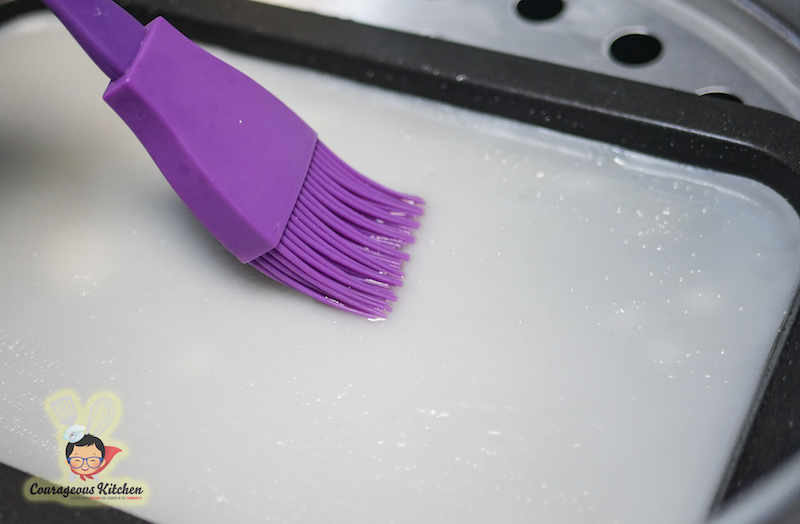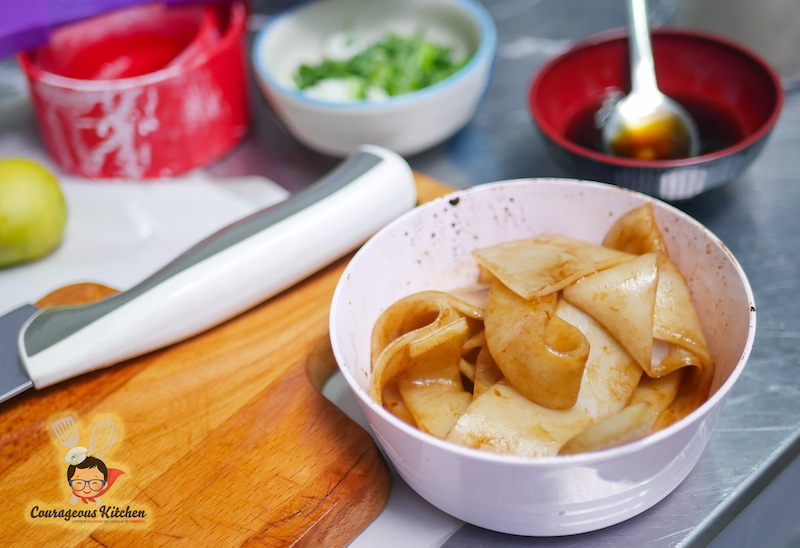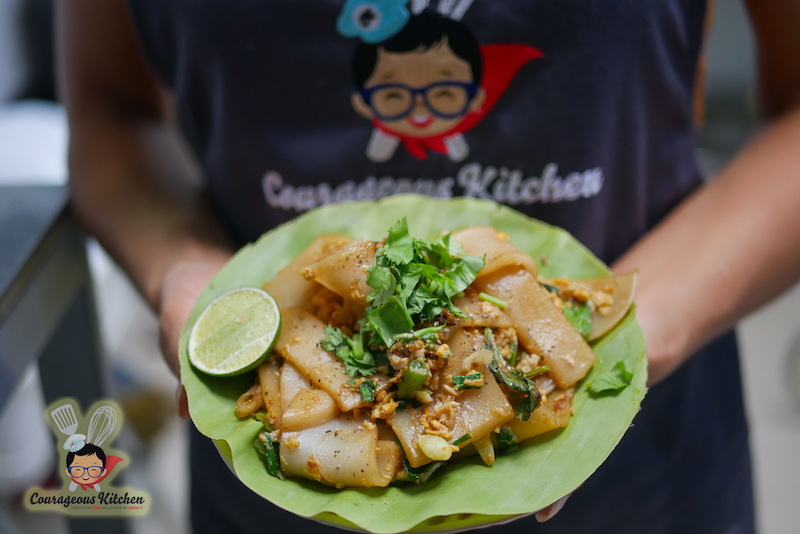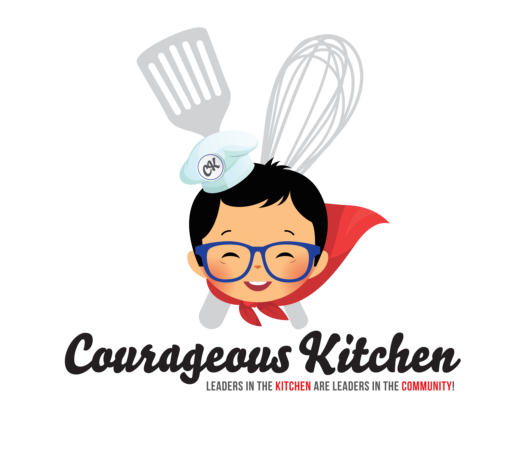Today’s shared plate is fresh out of the wok, and we’re ready to enjoy it with the latest episode of The Bangkok Podcast! Feast your eyes on our beloved pad see ew, and listen to the podcast on spotify or youtube. This drunken noodle dish from Thailand is often featured in our morning market cooking class, but today we wanted to share a version with a slight twist.
This isn’t just any pad see ew, it’s made with a little extra TLC, by taking the time to make our own rice noodles. For those who love pad see ew, you can probably imagine why this is special. Pad see ew is normally a milder Thai dish, but if you prefer the noodles a little spicy, you can dash a bit of our homemade sriracha on top (or alternatively you can make pad kee mow drunken noodles instead). Beyond a spicy sriracha sauce, we’re pairing this special plate of noodles with an episode of The Bangkok Podcast, whose hosts Greg and Ed, decided to feature Courageous Kitchen. We hope you will take the time to listen and share!

Homemade ‘Sen Yai’ Rice Noodles
The process has been tricky, but we have been testing recipes to create our own wide rice noodle on our own. One of the factors that makes pad see ew in Thailand, more outstanding than versions you can have in restaurants abroad, is that street vendors in Thailand can usually grab fresh rice noodles from the market. The noodles are factory made in giant batches each day, and delivered to the markets where a local vendor can purchase them, and slice them to the thickness that customers dictate. Best of all, you can buy a kilo of fresh rice noodles for much less than a dollar.

The local market version is sliced precisely, and dirt cheap, so why would you make your own?
We simply love the nuance of hand cut noodles and the ability to customize them to your preference. If you prefer them melty, bouncy, super long, or some combination of those characteristics, you can adjust the amount of rice flour and a tapioca starch you add into the recipe. In a city that thrives on street food, this is a lost art in most Bangkok homes, but we’re happy to guide you through the process of making your own rice noodles.

You can find the dish made with other types of noodles, but there’s something special about freshly made, wide rice noodles or ‘sen yai’. The texture is extremely soft and pliable, unlike most of the dried, pre-packaged noodles you find in Thailand’s supermarkets. Admittedly though, they can be a pain to cook. The noodles tend to get so gooey in a hot wok, that if you’re not quick enough when stirring, they begin to melt and glue the entire dish to the bottom of the wok.
Many cooks, especially Thailand’s beloved street chefs, solve this problem by cooking the noodles quickly with high heat. When you spot vendors doing this, you’re really peering into the impact of centuries of Chinese migration on Thailand’s food culture. When the pad see ew noodles pour out of those high pressure gas or charcoal heated woks, the entire dish has absorbed the smoke and the stir fry sauce has been charred through the lightning quick process. This is the same wok hei style cooking that gives us dishes like Malaysia’s ‘char kway teeo‘, a sibling dish which Malaysians love as much as Thais adore pad see ew.

We’ve just launched a new class to teach you to make these noodles, please check it out! We hope guests will have fun going a little deeper with their pad see ew, and take noodle making knowledge home to places where good rice noodles for pad see ew and other dishes are a rarity. As in the podcast, we also hope to share Courageous Kitchen’s message of how food has the power to transform communities with everyone who visits for this tasty meal.
Happy listening, and thanks for stopping by to snack with us.
Special thanks to The Bangkok Podcast. If you have any trouble listening, you can also find them on youtube. We recommend listening to their latest episodes with a sharing plate nearby!

